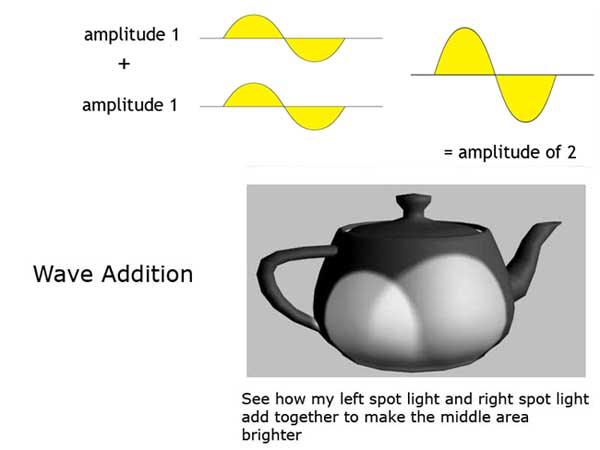“Light” by John Hammond
Light can be thought of as a wave (it’s the visible part of the electro-magnetic spectrum). We see variations in the wavelength or frequency of light as variations in colour.
Humans can see waves from violet through to red, Violet (blue) being the shortest wavelength and red being the longest. Beyond these extremes lie ultra-violet and infra-red, which we cannot see.

Wave Addition
The diagram below shows that if we add two waves each with a value of 1 together, the resulting wave has a value of 2. It is twice as bright.
This principle can be applied to 3DS MAX. Lights add up in a linear fashion; the more you add, the brighter the scene becomes… so you have to turn their intensities down.
see below how the two lights on the teapot add up.

Colour
The image below shows what happens when you add light of different colours. You can see how mixing colours works in a predictable way. Mixing colours follows the rules of the colour wheel.

The intensity of a light gets dimmer the further it is from the source. This happens at an exponential rate, the inverse square rule, i.e at a distance of 1 metre the light will have a brightness of 1, at 2 meters it’ll be 4 x dimmer, at 3 meters it’ll 9 x dimmer, and at 4 meters it’ll be 16 times dimmer. So, the further away from the light you get, the faster it gets even dimmer, until very soon you are getting so near to the edge of infinately dim that our bit-depth restricted computers just register it as zero, black. We can make lights in 3ds max behave like this if we use the ‘photometric’ lights.
(c) John Hammond, burnt.toast@ntlworld.com







Latest Comments